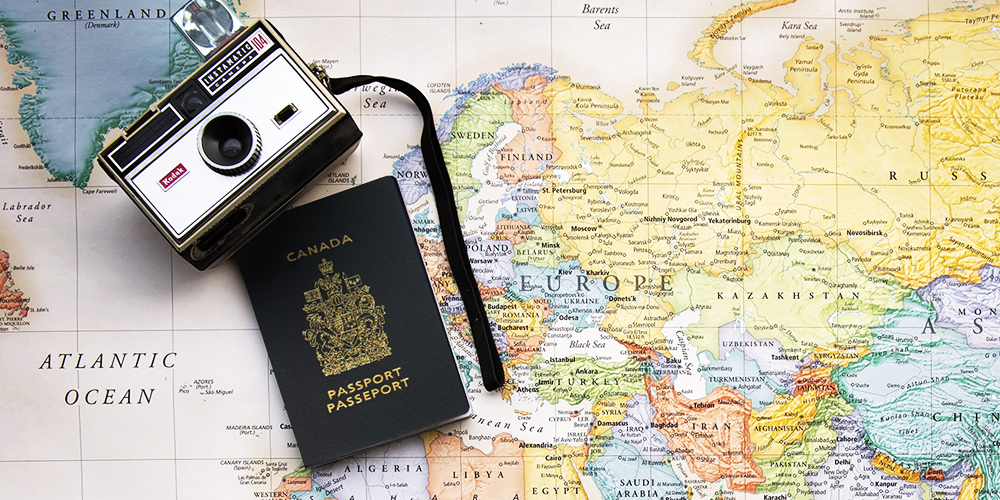Contact us :+91-70 335 335 70
- Monday - Sunday 10:00 am - 07:00 pm
- Third Floor, Plot No. 55, Sector 12-B, Dwarka, New Delhi, 110075



Students who have never been to Canada often have an image of it as the land of snow and hockey. What they find when they come to the country is quite different. Polar bears are only found in the northernmost regions and in most parts of Canada, winter only lasts a few months of the year. Hockey is our national winter sport but there are a thousand other sports and activities to choose from—some on sunny beaches, some near vast lakes or oceans, and some in the midst of busy modern cities.
Canada is a land of rich diversity, encompassing urban sophistication and abundant nature and wildlife. It is safe yet exciting; stable yet filled with adventure. It features cutting-edge technology, inspiring cultural icons, and a vibrant society that is open to everyone. Canadians tend to be modern, welcoming, and open-minded.
Across Canada are examples of excellence, innovation, and beauty, all of which—along with top-notch educational institutions—make Canada one of the leading study abroad destinations in the world.
Canada Is Multicultural and Open to the World: Canada is officially bilingual (English and French), and across the country, more than 200 languages are spoken. The biggest cities – Vancouver, Toronto, and Montreal – are home to many immigrant communities. A tolerant culture is among the top Canadian values—informally, on the streets and public venues, and formally, in Canada’s laws and government. Of particular note is the Charter of Rights and Freedoms that enshrines equality for all.
One of the world’s wealthiest major industrialized countries, Canada has always been a trading nation and commerce remains the engine of economic growth. It is a member of the G7, the G20, the Organization for Economic Co-operation and Development (OECD), the United Nations (UN), the World Trade Organization (WTO) and many other international bodies.
Canada’s economy includes three main types of industries:
While Canada boasts a highly educated workforce and a diversified economy, it is unusual among developed nations in the continuing importance of its natural resources sector (e.g., forestry, mining, energy)—even as it is one of the world’s most computer-literate and technologically sophisticated markets.
The Canadian Dollar is one of the most stable currencies in the world. Unless otherwise specified, all dollar figures presented throughout this course are in Canadian Dollars (CAD). You can check the current exchange rates for your local currency with this convenient currency converter from the Bank of Canada.
Canada Is a Wonderful Place to Live and Study: Since 2004, the United Nations has regularly ranked Canada highly in its Quality of Life Index. Combining excellent educational institutions, an innovative economy, a tolerant and safe culture, and extraordinary beauty, Canada is an ideal destination for international students.
Occupying the northern region of the North American continent, Canada’s land mass is 9,093,507 square kilometres, making it the second largest country in the world after Russia. In addition to coastlines on the Atlantic and Pacific oceans, Canada has a third seacoast on the Arctic Ocean, giving it the longest coastline of any country. To the south, Canada shares an 8,893-kilometre land border—the longest in the world—with the United States. To the north, the Arctic islands come within 800 kilometres of the North Pole. Canada’s neighbour across the Arctic Ocean is Russia.
About 80% of Canadians live within 160 kilometres of the country’s southern border, where there are warm springs, hot summers, and pleasantly crisp autumns. Winter usually runs from December to March, but the exact dates and lowest temperatures will vary across the country. Canada’s climate is characterized by its diversity, both from region to region and with four distinct seasons.
Canada’s seasonal temperature variations are embraced by Canadians: there are so many leisure activities to choose from as a result, from swimming outdoors in the summer to skiing in the winter! Although many outdoor activities require special equipment, rentals or second-hand items are easy to find and affordable. Most institutions have clubs which will bring student groups camping or skiing, making outdoor activities even more accessible to international students.
International students should be assured that all buildings in which they will study are well-heated in winter months, and most have air conditioning in the summer. Many university and college campuses have underground tunnels or covered bridges through which students can move from building to building in comfort, regardless of the weather.
Temperatures vary through the year and depending on the city. For example, students staying for a year in Toronto may see +35C as well as -20C, while students studying in Vancouver or Halifax will see more mild temperatures but will have many more rainy days. Agents should advise students studying in Canada to bring appropriate clothing depending on the weather conditions they are likely to face, for example a warm coat, hat, boots, scarf and mittens in the winter, a good rain coat for spring and summer, and cool summer clothing for those staying in June – August. For more detailed weather information visit: https://weather.gc.ca.
Certificate Course: Certification courses are basically worked for students who are not able to get into degree programs. Generally, Duration of these courses vary from six months to one year of duration.
Diploma Course: Diploma is a short term course generally of 2 or 3 years which mainly focus on training students in particular field. The admission to diploma course can be taken after clearing high school examination. Diploma is being done through recognized university or an educational institution.
Bachelor’s Degree: An undergraduate or Bachelor’s degree is usually the first university degree, such as an Associate or Bachelor’s degree.
Master’s Degree: A postgraduate degree encompasses a range of qualifications that require an undergraduate degree to be considered for entry, these include courses at Postgraduate Diploma level all the way to a PhD.
Doctoral Degree: A doctorate degree is the highest level of academic degree in most fields. For research or university teaching, the degree is usually a PhD. Typically a doctorate degree takes four years to complete, post-bachelor’s degree.
Professional school degree: Professional degrees include the Doctor of Medicine (MD), the Doctor of Education (EdD), and the Juris Doctor (JD), among others.
The Canadian education system is valued as being a world-leader in research programs while as yet staying accessible and diverse.
Canadian degree programs appear to be more adaptable too.
Regardless of what degree students choose to study, they are given some option with regards to choosing classes.
Along these lines, Canadian students can decide on their own workload and what subjects they will study as per the discipline
Post-Secondary education is the responsibility of the individual provinces and territory.
At the post-secondary level, Canada extends a range of educational institutions.
There are two major types of Institutions:
What is a University?
What is a University College?
What is a Community College?
What is a Institute of Technology and Advanced Learning?
What is a College of Applied Arts and Technology?
Generally, international students can work off campus up to 20 hours per week: During regular school sessions or while you are studying as part of an intensive program with no planned breaks. If your studies are part-time because you are finishing the last session of your program.
The Quebec education system comprises four levels:
College education in Québec education system :
College is the first level of post-secondary studies and precedes university studies.
The college network offers various educational opportunities:
Programs of Study Leading to a DCS
Programs of Study Leading to an ACS
The Certificat d'Acceptation du Quebec (Quebec Acceptance Certificate, CAQ) is required for most temporary foreign workers and students who intend to reside in the province of Quebec.
Fee: There is a $117 application fee for a CAQ for studies. The fee is non-refundable, even if the application is denied.
student visa application process for Indian students applying to study in Canada involves several steps. It's important to note that immigration policies and procedures can change, so it's recommended to refer to the official website of Immigration, Refugees and Citizenship Canada (IRCC) or consult with a registered immigration consultant for the most up-to-date information. Here is a general overview of the student visa application process for Canada:
